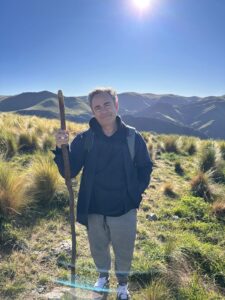
Interweaving Spiritual Wisdom: Brahma Kumaris, Newton, Aurobindo, Meher Baba, Hawkins, Buddhism, and Taoism
The Nature of the Soul and the Divine Self At
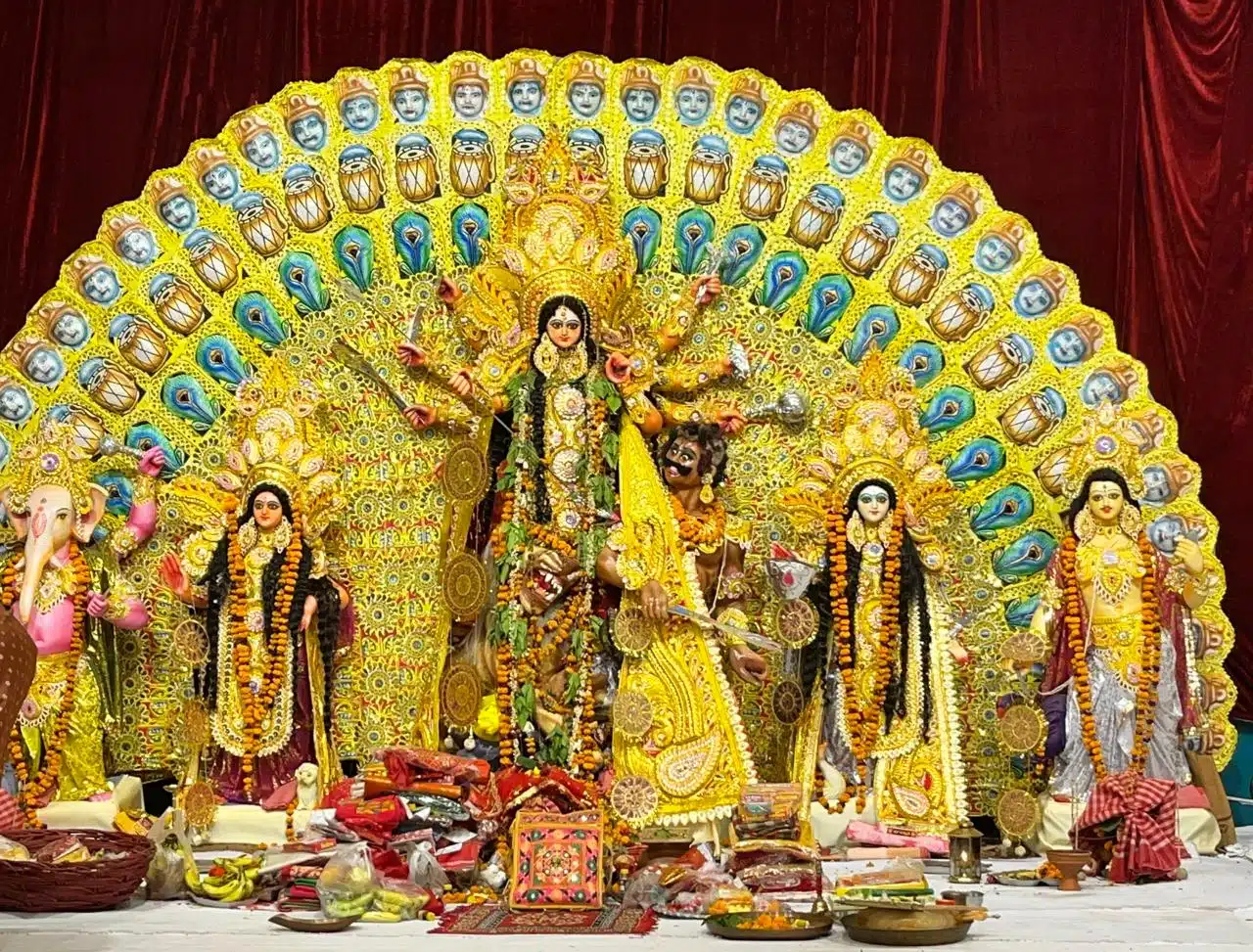
Introduction: I write these words from the vibrant land of India during the sacred festival of Navratri. Here in Jaipur, as we convene the second Global Happiness Forum, the atmosphere is alive with devotion and purpose. I am working with local artisans, weaving together emotional, spiritual, and social well-being into the very fabric of our community. In this auspicious time, nine nights are dedicated to honoring the Goddess in her many forms – a celebration not just of cultural tradition, but of energies that resonate deeply with our own quest for inner peace and wholeness. The dancing flames, rhythmic drumbeats, and communal prayers of Navratri serve as a powerful reminder: by engaging in inquiry of our energies and even our shadows, we can unlock a life of flourishing and fulfillment.
Navratri, meaning “nine nights,” is a celebration of the divine feminine energy – Shakti – manifesting in different aspects of the Mother Goddess. Each night honors a different form of Goddess Durga (Navadurga), and each form represents specific qualities and virtues. The Mother Goddess is said to embody protection, love, prosperity, and knowledge, with unlimited love, compassion, and mercy among her divine attributes. Indeed, the Devi Shakti (goddess energy) encompasses a spectrum of qualities – strength, transformation, anger, beauty, compassion, fear, and power – which “are reflected in each individual, in different events, and in this universe as a whole”. In other words, the goddess’s energies live within us; the traits she represents are archetypes of our own human experience.
During these nine nights, devotees engage in prayer, fasting, dance, and meditation, aligning themselves with the goddess’s energy. Navratri is traditionally understood as a triumph of light over darkness and knowledge over ignorance. This is vividly illustrated by the stories of Durga’s victories over various demons – symbolic of vanquishing the inner demons of ego, ignorance, greed, and fear. The festival is thus a sacred journey of spiritual growth. Each night, practitioners focus on one form of the Devi, invoking her qualities within themselves. For example, on the first day of Navratri, the seeker concentrates on the Muladhara (root chakra) – the foundation of stability and the starting point of spiritual discipline. By the fourth day, the practice has moved upward to the Anahata (heart chakra), and as a result of worshipping the fourth form of Durga, “the mind of the worshiper enters the heart; devotees get rid of all ailments and sorrows and are blessed with strength and health”. In this way, the Navratri journey guides one from the base of the spine to the crown of the head – a kundalini ascent through the chakras – purifying the body-mind and awakening higher consciousness with each form of the Goddess.
Importantly, each aspect of the Goddess offers a unique lesson for inner development. In the middle of Navratri, for instance, devotees honor Kushmanda, Skandamata, and Katyayani, who collectively illuminate light, love, and courage. Kushmanda is revered as the creatrix who brings forth cosmic light, Skandamata embodies a mother’s love, and Katyayani grants fearlessness and strength, teaching us about abundance beyond the material. Thus, Navratri can be seen as a holistic curriculum of the soul: a passage through darkness into light, fear into courage, and separation into love. The culmination on the tenth day (Vijayadashami) celebrates the Goddess’s final victory – a radiant metaphor for the enlightened state that comes when one has integrated all these energies. This is the Fundamental Peace that arises when our inner world is in harmony, reflecting outward as joy and balance in life.
The concept of Fundamental Peace underpins much of our work at the World Happiness Foundation. At its core, fundamental peace is a peace attained when individual and society alike achieve a union of three pillars: freedom, consciousness, and happiness. Like a three-legged table, if even one pillar is missing, true balance is impossible. This idea echoes the ancient axiom “as within, so without” – the notion that the outer world mirrors our inner state. In practical terms, if we feel trapped or imbalanced internally – whether physically, mentally, or spiritually – we remain unhappy and not at peace, and when many individuals feel this way, the disharmony reverberates through society. Peace is the highest happiness; it emerges when body, mind, and soul are in sync, a state of total harmony.
Achieving this harmony is a gradual process of inner balance. We must actively cultivate alignment between our responsibilities and our passions, between our minds and our hearts. Just as the Navratri devotee methodically purifies each chakra night after night, any individual seeking fundamental peace works to balance various aspects of life – work and play, self-care and service, personal desire and higher purpose. Inner balance is not a one-time achievement but a continuous practice, “like riding a bicycle – to keep your balance, you must keep moving,” as Einstein famously said. When challenges arise (the “uninvited events” of life), peace requires the flexibility to adapt while staying centered.
Fundamental Peace also has a collective dimension. Peace radiates in concentric circles: peace within oneself makes possible peace between people, which fosters peace among communities and nations. Thought leader Johan Galtung distinguished negative peace (mere absence of conflict) from positive peace (the presence of justice, healing, and collaboration). Fundamental Peace aligns with this idea of positive peace – it “marries the forces of inner and outer peace,” asserting that “anything in the world can be transformed when we transform ourselves”. In other words, the battles we fight in the world – for justice, for sustainability, for happiness – must begin as battles won in the chambers of our own hearts. Navratri’s lesson precisely reflects this truth: the demons of greed, anger, and delusion must be slain within if we are to see a world free of those demons without. Only then can peace be “experienced globally”. Fundamental Peace calls us to cultivate certain qualities of mind and spirit that support this inner–outer harmony: integrity, mindfulness, wisdom, well-being, and ultimately freedom from fear. These qualities are much like the goddess’s gifts – they bloom in us as we do the inner work, and they are the fragrance of peace.
One of the profound insights from both ancient wisdom and modern psychology is that to achieve wholeness, we must not repress our “shadow” energies but rather confront and transform them. The Devi in Navratri does not shy away from demons; she engages them in battle, ultimately transmuting their destructive force into a testament of truth and Dharma. In our personal journeys, these demons are our own shadows – the disowned or suppressed parts of ourselves that cause inner conflict. Rather than deny these parts, we are called to approach them with curiosity and compassion, much like the Goddess approaching the battlefield with fearless love.
In my work, I have developed the Meta Pets Method, a playful yet powerful system for self-inquiry and ego integration, precisely to facilitate this inner dialogue. Each Meta Pet card features a fantastical creature representing three layers of transformation: the Shadow (a distorted or repressed aspect of ourselves), the Gift (the positive power that emerges when we integrate that shadow), and the Essence (our highest potential once the shadow is resolved). For example, one Meta Pet card might guide the journey “From Conflict to Peace,” taking a person from recognizing an inner shadow of conflict, to finding the gift in it – perhaps the capacity for courage or assertiveness – and ultimately to realizing the essence of peace that was hidden behind the conflict. In this way, each card acts as “a mirror, a koan, and a friend,” inviting a sacred conversation with a part of ourselves we may not have fully understood. This mirrors the Navratri dynamic: by acknowledging the demon (shadow) and engaging it, we can transform its energy into something beneficial (a gift) and uncover our true divine nature (essence).
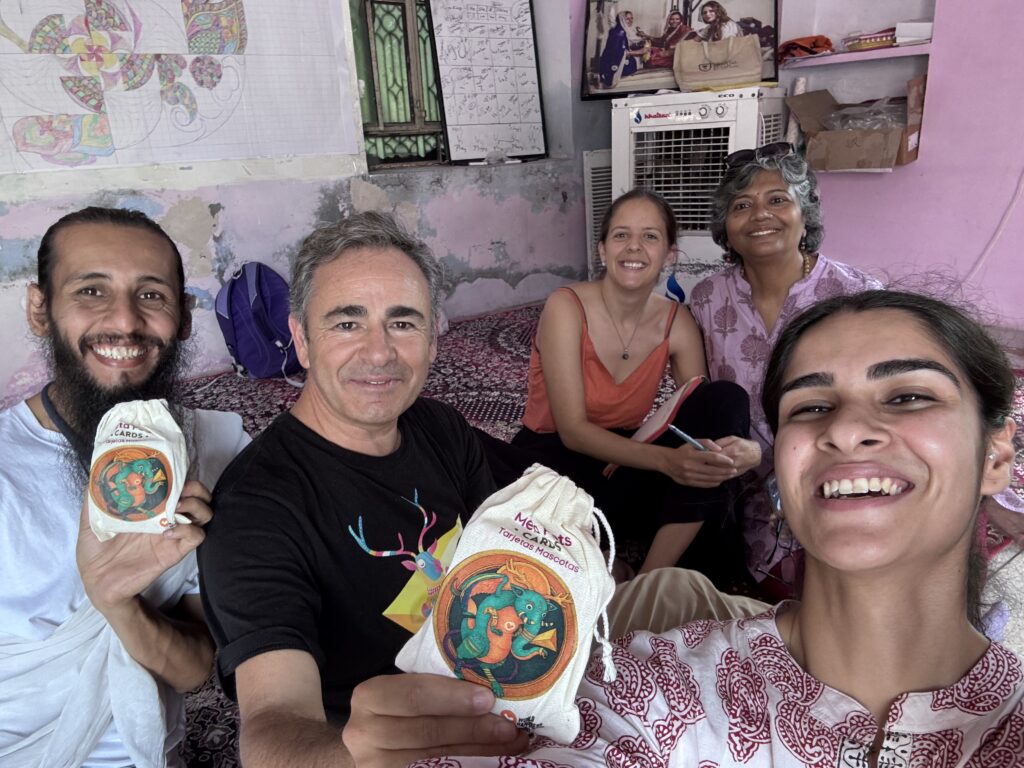
Modern psychology echoes this ancient process. Carl Jung famously said that one does not become enlightened by imagining figures of light, but by making the darkness conscious. Through tools like Meta Pets or reflective practices, we create a safe space to converse with our fears, angers, and wounds, rather than running from them. When we face these shadows head-on – much as Durga faces Mahishasura – we rob them of their power and reclaim that energy for growth. Our approach is gentle but deep: playfulness helps bypass the ego’s defenses, allowing truths to surface from the subconscious. Time and again I’ve witnessed people discover insights through symbolic play and storytelling that they struggled to access through analytical thinking alone. By integrating Eastern wisdom (like Vedanta’s teaching that our separate self is an illusion and our true self is boundless awareness) with Jungian depth psychology (the mandate to integrate the shadow to become whole), and even with neuroscience (which shows that mindfulness and reframing can rewire the brain for calm and focus), we arrive at a powerful truth: when we change the stories we tell about ourselves, we change who we become.
In practical terms, this inner alchemy means that every time we transform a personal shadow – be it anger, grief, or insecurity – into its higher expression, we move closer to fundamental peace in our lives. We heal an inner split and become more integrated, authentic individuals. And as we do so, the peace within us naturally extends outward in our relationships and communities. A person who has befriended their own darkness can more readily be a light for others. The Goddess’s victory over darkness is not the elimination of energy, but the transformation of energy. Our anger, once understood, can fuel righteous action; our fear, once faced, can become prudence and wisdom. Thus, the inquiry of our energies and shadows is not an indulgence in darkness – it is the very work of bringing light into our lives. As one spiritual teaching from the Navratri lore suggests, when we fully witness even a powerful emotion like anger to its peak, we often find it quickly dissipates into awareness. We come out the other side with a surge of fresh energy and clarity. This is the hidden gift: on the other side of every shadow is an aspect of the divine mother waiting to embrace us.
To truly flourish as “wholebeing” persons, we need a framework that is both visionary and practical – one that integrates the best of modern science and leadership wisdom with timeless spiritual truths. In my journey, I’ve found it useful to blend the ROUSER model of transformational leadership with the yogic concept of the Koshas (the five layers of being). We call this integrated approach the ROUSER–Koshas model. Its aim is to ensure that well-being and growth occur on every level of our existence, from the most external and social to the most internal and spiritual.
ROUSER is an acronym I developed to summarize six key principles of conscious leadership and personal growth: Relations, Openness, Understanding, Self-Awareness, Empowerment, and Reflection. Briefly, this means valuing relations by building meaningful, trust-filled connections; practicing openness through transparency and receptivity to new ideas; cultivating understanding via empathy and insight into others’ needs; developing self-awareness of one’s own emotions, strengths, and values; fostering empowerment by enabling oneself and others to act with confidence and ownership; and engaging in reflection through continuous learning, mindfulness, and self-assessment. These principles create what I call “Conscious Catalysts of Well-Being” – individuals who drive positive change while caring for the human needs of themselves and those around them. In our professional programs, such as the Chief Well-Being Officer certification, we emphasize ROUSER to help leaders build resilient cultures and thriving communities, ultimately empowering people to lead fulfilling lives in balance and well-being.
The Koshas, on the other hand, come from the ancient yogic understanding of the self. According to the Taittiriya Upanishad, each person has five bodies or sheaths, each more subtle than the last. These layers are: the physical body (annamaya kosha), the energy body (pranamaya kosha, composed of life force), the mental body (manomaya kosha, consisting of thoughts and basic consciousness), the wisdom/intellectual body (vijnanamaya kosha, the layer of higher understanding and intuition), and the bliss body (anandamaya kosha, the core of joy and love). The yoga tradition teaches that to live a fully healthy, balanced life, we must care for all five layers of our being. If we neglect any one layer – say we train the body but ignore the mind, or nurture the intellect but starve the heart – our overall well-being suffers. The subtlest sheath, the bliss body, “pervades the other bodies” and is experienced as happiness, delight, and bliss. In effect, deep within us is a source of joy and universal love that is meant to infuse all aspects of our life, if only we strengthen our connection to it.
The ROUSER–Koshas model marries these two perspectives: it encourages us to apply the ROUSER principles at every layer of our being. In working with artisans here in India, for example, we ensure that Relations and community support (physical and social well-being) are strong; we promote Openness and emotional sharing (energy and emotional body health); we build Understanding and empathy (mental and relational body health); we guide Self-Awareness and mindfulness practices (cultivating the wisdom body); we encourage Empowerment through skills and purpose (strengthening both outer confidence and inner vitality); and we instill Reflection via meditation, journaling, and group dialogue (nourishing the intellect and bliss body with insight and peace). This holistic approach means seeing each artisan not just as a pair of hands that weaves rugs, but as a whole being – body, mind, heart, and spirit – whose fulfillment matters on all levels. It aligns with what the yoga sages knew: our subtler inner bodies are the true source of health and creativity in our lives. When we provide tools to exercise and heal every layer of a person (from breathwork and yoga for the energy body, to emotional support circles for the mental body, to contemplative arts for the wisdom and bliss bodies), we witness a remarkable transformation: individuals become more resilient, joyful, and alive in their work and relationships. They thrive not only economically, but emotionally and spiritually. This whole-person flourishing is what we mean by “wholebeing” well-being.
A beautiful illustration of the ROUSER–Koshas model in action is our collaborative project with the artisans of Jaipur Rugs, titled “Threads of Happiness”. From the very outset, this initiative was envisioned as far more than an economic upliftment program – it is a journey of personal and community transformation. As I have written in my reflections on this project, it’s about fostering a deeper sense of self-awareness, empowerment, and connection to purpose and well-being among the artisans. We recognized that true transformation must begin within. Thus, alongside training in craftsmanship, we hold safe spaces for artisans to practice presence, mindfulness, and emotional expression. The focus is on the heart and soul of the weaver, not just the act of weaving. We gather in circles where artisans can reflect on their life stories, share their hopes and struggles, and learn techniques to manage stress and cultivate joy. In essence, we are teaching them to weave joy into every fiber of their lives, not only into the rugs they create.
One of the keys to this process is guiding artisans through what we call the Meta Journey – a series of introspective exercises inspired by the Meta Pets Method and infused with local cultural wisdom. In practice, this often involves storytelling with archetypal characters (much like the goddess tales of Navratri) and guided reflection on personal challenges. Artisans might draw a Meta Pet card or a traditional motif and discuss what shadow it brings to mind – perhaps a memory of a failure or a fear they carry. Through facilitated dialogue, they identify the Gift in that shadow – maybe resilience, creativity, or a lesson learned – and then envision their Essence – the person they become when that gift is fully integrated. We’ve seen a weaver pick a card with a dragon and dove, symbolizing anger and peace, and realize that her temper (dragon) when understood actually gave her the power to protect her family, ultimately leading her to become a peacemaker (dove) in the community. Such insights are profound; they validate the individual’s experiences and reframe their narrative from one of suffering to one of growth and meaning.
Throughout this journey, we emphasize Compassion, Forgiveness, and Gratitude as fundamental practices – a transformative trinity of virtues that accelerate healing. These three are like a braid that strengthens the fabric of the heart: “Forgiveness clears the emotional blocks that hold you back. Compassion builds the bridges that connect you to yourself and others. Gratitude amplifies the joy and abundance in your life”. We encourage artisans to forgive past grievances – whether toward others or themselves – as a way to liberate themselves from the burdens of resentment and regret. In our workshops, forgiveness is approached through rituals (sometimes as simple as writing a letter and burning it to symbolize release) that help participants confront their shadows, unearth suppressed emotions, and find closure and peace. This aligns with the idea that to forgive is to set a prisoner free and discover that the prisoner was you, as Lewis Smedes said. Many artisans carry deep-seated hurts – perhaps an unfair deal, a family conflict, or the trauma of poverty – and learning to forgive becomes a key to their liberation and confidence.
Next, we cultivate compassion – the bridge to connection. Through guided meditations on loving-kindness and sharing circles, we train the ability to see the suffering in oneself and others without judgment, alongside the wish to alleviate that suffering. In the group context, this has been magical: artisans start to support one another, realizing that their struggles are not isolated. They practice active listening and empathy, thereby “bridging divides, healing relational wounds, and co-creating experiences rooted in kindness and mutual care”. The presence of compassion in our gatherings turns a collection of individuals into a community bonded by shared humanity. It’s heartening to see an elder weaver comfort a younger one who is anxious, or a group spontaneously organize help for a family in need – signs that compassion is taking root as a living force.
Hand in hand with compassion comes gratitude, which we frame as the gateway to recognizing the abundance of life. We often end our sessions with a gratitude circle, where each person names one thing they are thankful for that day. This simple practice “shifts your focus from scarcity to abundance, fostering a mindset that invites joy and contentment”. In a community used to scarcity, this shift is revolutionary. Artisans begin to celebrate the blessings they do have – supportive friendships, skills honed by time, the beauty of the patterns they weave, the smile of a child at home. Gratitude, as we say, turns what we have into enough. It elevates the group’s energy; over time, we see fewer complaints and more smiles. In psychological terms, gratitude practices have been shown to significantly boost well-being, but here on the ground the evidence is in the brighter faces and more optimistic outlook of our participants. It is a communal practice too – by sharing gratitude, they reinforce social bonds and mutual appreciation.
As powerful as each of these three practices is alone, their real magic unfolds when combined. As I like to say: forgiveness heals the past, compassion enriches the present, and gratitude shapes a positive future. We have witnessed this temporal alchemy: as an artisan forgives and lets go of an old resentment, she frees herself to be more compassionate with her family now; as she becomes more compassionate and grateful, she lays the groundwork for a hopeful, self-confident future. The “cycle of healing and regeneration” that forgiveness, compassion, and gratitude set into motion nurtures the mind, heart, and soul in tandem.
Building on this foundation, we invite the artisans to experience what comes when the heart is unburdened and open: Light, Bliss, and Universal Love. These are lofty concepts, but we ground them in everyday experience. The inner light refers to moments of insight and wisdom – those aha moments where one sees a new possibility or understands the deeper meaning of a challenge. It is also the light of consciousness itself, which grows brighter as one’s mind becomes clear. During Navratri, one of the goddesses, Kushmanda, is said to have created the universe with her divine laughter, spreading light in all directions. We use this story to remind artisans that light is their birthright: even in darkness, they carry an inner spark of creativity and knowledge that can illuminate their path. Practically, this might manifest as an artisan deciding to teach a skill to others (spreading light), or simply developing the confidence that their intuition has value. We see this “lightbulb” turn on in their eyes as they share new ideas for their community or realize a profound personal insight.
Bliss – or ananda – is introduced as the natural state of a heart in harmony. In yoga philosophy, the subtlest layer of our being is the anandamaya kosha, the sheath of bliss and joy. This doesn’t mean a giddy excitement, but a deep, contented peace – the feeling of being aligned with one’s true self and the universe. We explain that bliss is not something to chase externally; it is uncovered when you do the inner work of forgiveness, compassion, and gratitude. Often, after our group meditations or during the ecstatic dances of Garba (the traditional Navratri dance), some artisans describe a sensation of lightness or joy for no particular reason – a state of मस्ती (masti, joyful intoxication). We encourage them to savor and remember these moments. They are tasting the bliss body within, the part of them “composed of pure joy” that “pervades the other bodies”. This bliss is the essence of Fundamental Peace – a contentment that isn’t dependent on external circumstances, because it flows from an inner alignment and freedom.
Finally, we speak of Universal Love, the expansive love that arises when one realizes the interconnectedness of all beings. In the context of our work, this often emerges naturally: as artisans practice compassion and see the humanity in each other, their circle of care widens. Many start by developing self-compassion (treating themselves with kindness after years of self-criticism), then compassion for their immediate relationships, and eventually a broader empathy for the world. We draw inspiration from the figure of Kwan Yin, the Bodhisattva of Compassion, who embodies unconditional love and mercy for all beings. Kwan Yin teaches us to “cultivate a heart of compassion, extending kindness to all beings without discrimination” – a practice that elevates our own spirit and contributes to a more peaceful world. In our workshops, we remind participants that the love a mother feels for her child, the camaraderie they feel in their group, even the affection for the craft they do – these are all reflections of a universal love that holds us all. With gentle guidance, they come to sense that the same spark of divinity or goodness that is in them is in everyone. This realization births a powerful sense of connection. I recall one artisan saying that after these sessions, she started praying not just for her family’s well-being, but “for all the people in the village, and all people everywhere to be happy.” This moment nearly brought me to tears – it was evidence that a seed of universal love was blossoming in her heart, a testament to the transformative power of this inner work.
The results of combining these ancient spiritual practices with modern well-being models have been nothing short of remarkable. We have seen artisans who once doubted their self-worth step into roles as community facilitators, leading their peers in meditation or discussion – empowered in a way they never imagined. We have watched groups of craftswomen form support networks, exemplifying that when people feel “seen, heard, and valued,” their creativity and productivity soar alongside their emotional well-being. The workplace, in this case a humble weaving center, transforms into a sanctuary of growth and joy. By nurturing inner peace in each artisan, “we are laying the foundation for lasting systemic change in their lives, families, and communities”. The happiness and equilibrium they cultivate inside inevitably ripple outward – they handle conflicts differently, they teach their children these values, they innovate in their art, and they even approach clients or markets with a new confidence and openness.
As we continue this journey, the phrase that often comes to my mind is: we are all weavers. Just as the artisans weave threads into beautiful rugs, each of us is continuously weaving the fabric of our lives with our thoughts, emotions, actions, and energies. The question is: what pattern are we weaving? When we weave with the threads of fear, anger, and ignorance, the tapestry of life becomes tattered with suffering. But when we choose to weave with threads of awareness, compassion, forgiveness, gratitude, light, bliss, and love, we create a tapestry that is resilient, vibrant, and uplifting. In Jaipur, together with my dear friend and visionary partner N.K. Chaudhary of Jaipur Rugs, I have seen this tapestry of transformation taking shape – a design of human flourishing that interlaces Eastern wisdom and Western innovation. We often speak of “weaving a tapestry of transformation that will change lives, communities, and the world.” This is no mere rhetoric; it is observable reality in the smiles of the artisans and the improved metrics of their well-being. It is also a guiding metaphor for how society at large can evolve.
As the Founder of the World Happiness Foundation, I see this work as part of a larger global movement towards what we call wholebeing happiness. At gatherings like the Global Happiness Forum in Jaipur, leaders, scholars, and change-makers from around the world are recognizing that happiness must be approached holistically – integrating emotional, spiritual, and social dimensions. We are collectively learning that GDP and material growth alone cannot define progress; rather, the true wealth of a society is measured by the well-being of its people in all facets of life. Our discussions here in Jaipur have been energized by the synergy of Navratri’s lessons and our contemporary pursuit of happiness. It feels as though the ancient Mother Goddess is blessing our forum – reminding us that the feminine energies of nurturing, inclusion, intuition, and empathy are crucial in reshaping a world of peace and joy. The Forum, now in its second year, builds on the resounding success of its debut and has become a gateway to global flourishing where ideas like Fundamental Peace and Happytalism (happiness-centric paradigms of development) are celebrated and advanced.
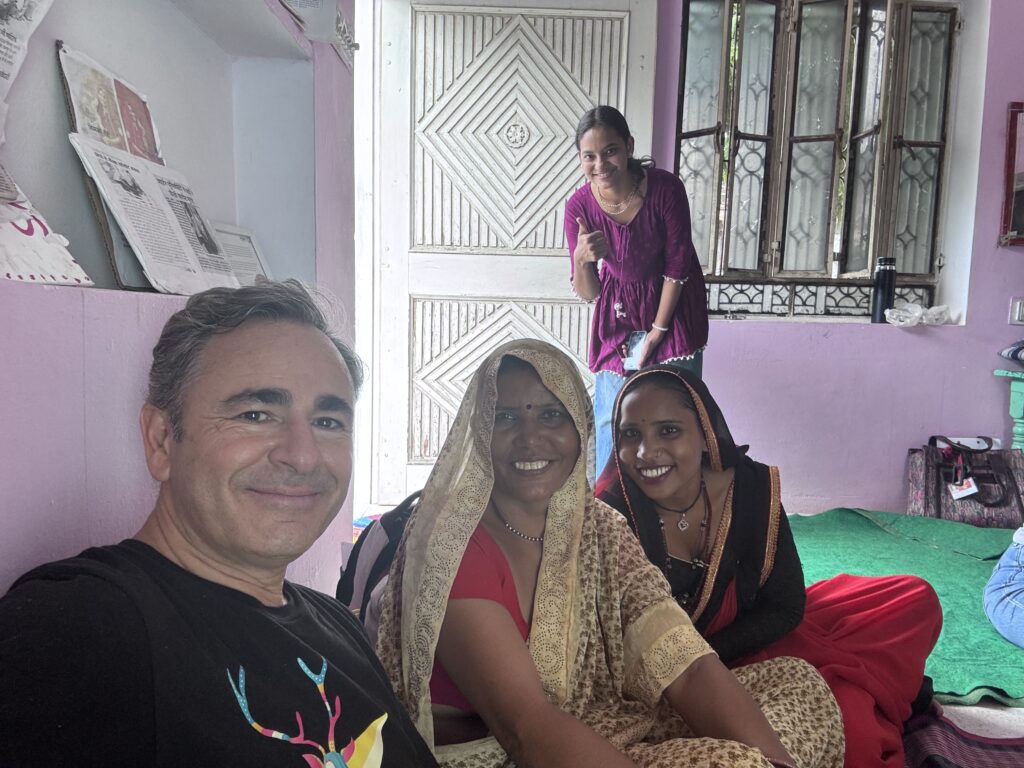
Standing at the confluence of tradition and innovation, I am filled with gratitude for the path that has led us here. The Navratri festival has taught us that within each of us resides a pantheon of energies – some divine, some seemingly demonic – and that our task is to recognize the divinity in all of it. The journey to Fundamental Peace is not about rejecting the parts of us that are difficult or dark, but about skillfully transforming them and integrating them into a harmonious whole. It is about becoming, in a sense, our own Durga: courageous, loving, and wise in facing whatever life brings. By engaging in deep self-inquiry and shadow work, we do not become less human; we become whole humans.
In practical, lived terms, this wholeness manifests as a life of flourishing and fulfillment. It means waking up with a sense of purpose and going to sleep with a sense of peace. It means our relationships thrive because they are based on authenticity and empathy. It means our work, whether weaving a rug or leading an organization, becomes an expression of our values and our joy rather than a source of stress. Achieving this doesn’t require perfection; it requires sincerity and consistency in practice – forgiving the past, compassionately engaging the present, gratefully stepping into the future. Over time, these practices light up our inner world, allow us moments of true bliss, and expand our love to encompass all beings.
My experience here in India, working with artisans and celebrating festivals and forums alike, has reinforced a hopeful vision: that ancient wisdom and modern science are converging on the same truth. Whether we speak of Navadurga or neuroplasticity, chakras or positive psychology, we find a common thread – the human capacity to grow, heal, and find meaning. We find that the keys to happiness have always been in our own hands, in the form of simple yet profound practices and an openness to transformation.
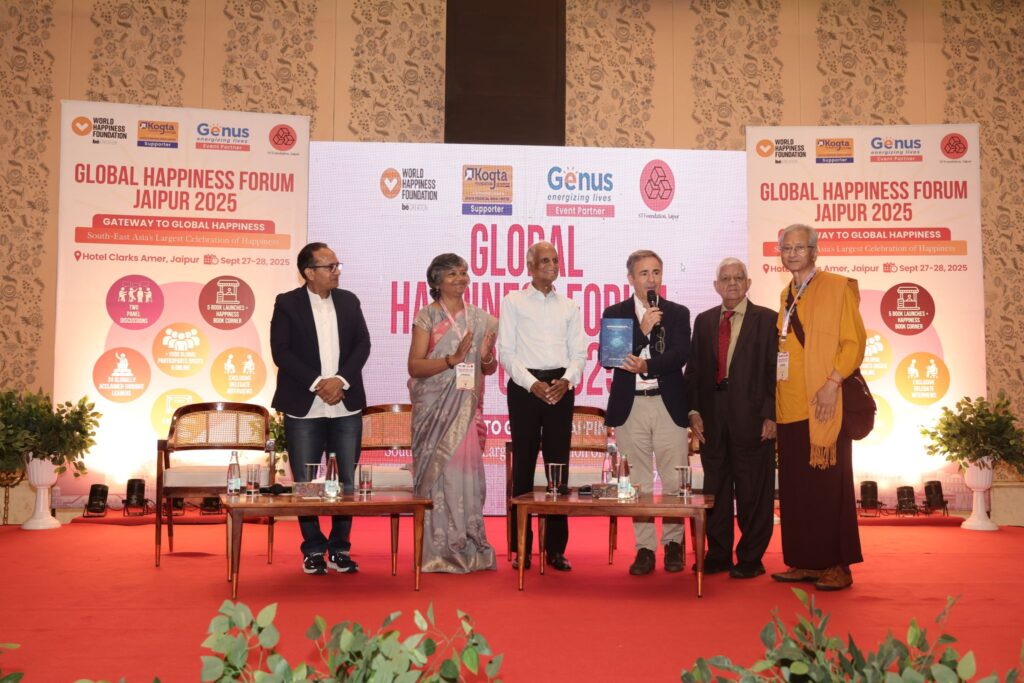
As we conclude the Global Happiness Forum and as the Navratri lamps dim until next year, I carry with me an image of a world that is possible. In that world, freedom, consciousness, and happiness are the three pillars of every community’s foundation. In that world, every individual knows how to tend to their inner garden, integrating shadow and light, so that peace blossoms within and around them. It is a world where we honor the divine feminine energy – the energy of caring, creativity, and connectedness – as much as we honor rationality and technology. It is, ultimately, a world where we recognize that we are all threads in a single tapestry, and thus choose to weave that tapestry with love and intention.
In closing, I am reminded of a powerful sentiment we often share in our programs: “Let’s keep transforming – one shadow, one gift, one Meta Pet at a time.” Each small step, each personal victory over anger with forgiveness, over isolation with compassion, over despair with gratitude, contributes to the great collective quilt of global happiness. Navratri has shown us that nights of effort yield the triumph of the day; likewise, our sustained efforts in inner work will yield a dawn of Fundamental Peace in our lives and, by extension, in our world.
With a heart full of gratitude, I extend my thanks to everyone who has been part of this journey – the gurus and guides, the researchers and practitioners, the artisans and colleagues, and the divine Mother in all her forms. May we continue to inquire deeply into our energies and shadows, celebrating both our humanity and our capacity for transcendence. May we all experience the flourishing that comes from living in alignment with our highest selves. And may the light of Navratri and the ethos of Fundamental Peace guide us in weaving a brighter, happier future for all beings.
With joy and love,
Luis Miguel Gallardo – writing from Jaipur, India, on behalf of the World Happiness Foundation, as a humble weaver of happiness in the making.
Celebrate the spirit of #Navratri with a visionary blend of ancient #Shakti wisdom and modern well-being frameworks like #ROUSER and #Koshas. This nine-night #Navadurga journey sparks #InnerPeace, #SelfInquiry, and #ShadowIntegration, empowering #ConsciousLeadership and #EmotionalIntelligence for holistic #WholeBeing growth. Join the #GlobalHappiness #HappinessMovement at the #GlobalHappinessForum for a journey of #SpiritualAwakening, #WellBeing, and #Wellness that uplifts #Empowerment and #Transformation for individuals, communities, and even #Artisans. Embrace the #DivineFeminine energy with #Bhakti (devotion) and #Dhyana (meditation) as we honor #Ananda (bliss) and #Shanti (peace). From personal growth to social unity (#VasudhaivaKutumbakam), let’s ignite #Jagriti (awakening) and #Parivartan (change) for #WellBeingForAll and #Sarvodaya (universal uplift).

The Nature of the Soul and the Divine Self At
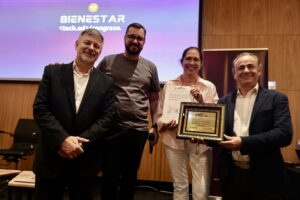
After lighting up Buenos Aires with the World Happiness Fest

Executive Summary The Doha Political Declaration adopted at the 2025